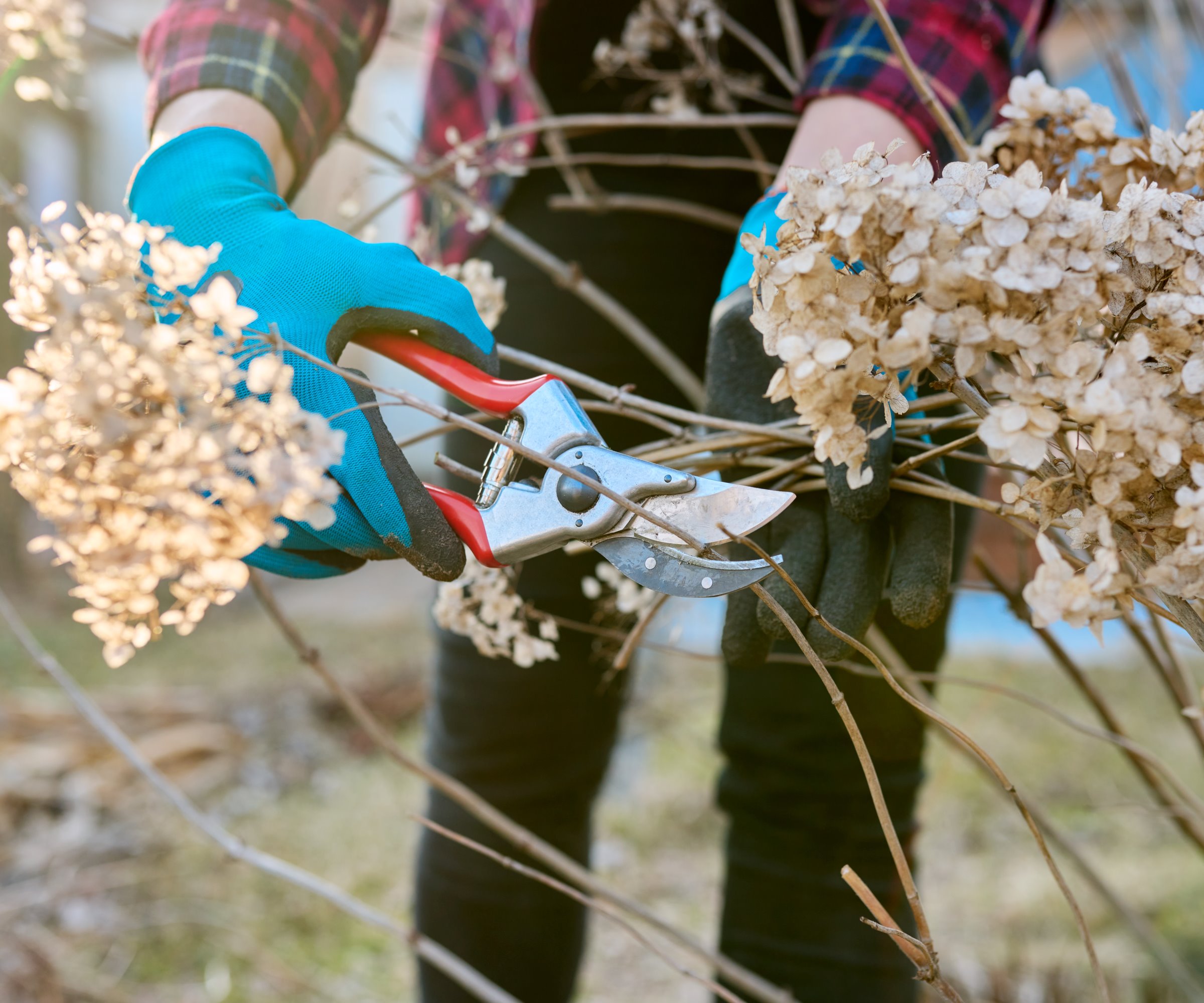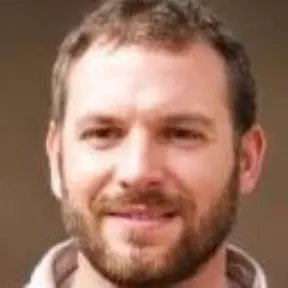When to prune panicle hydrangeas – this is the ideal time to trim for healthy shrubs and lots of blooms
Discover when the experts recommend to prune panicle hydrangeas, and key times to avoid


Panicle hydrangeas (Hydrangea paniculata) are hugely popular varieties of hydrangea that can be grown as deciduous shrubs or small trees to dazzle in a backyard thanks to their late summer conical flowers.
Native to temperate regions of China and Japan, panicle hydrangeas have been grown in domestic gardens for over century and new developments in breeding have increased the number and choice of cultivars for anyone wanting to grow hydrangeas at home.
If you have hydrangeas, it is important to know how to prune hydrangeas to keep the shrubs healthy and performing at their best year after year. This includes understanding the best time to prune, which varies depending on the hydrangea type. Our guide looks at when to prune panicle hydrangeas in late winter, and helps you know the best time to trim.

What is a panicle hydrangea?
A panicle hydrangea is a multi-stemmed deciduous shrub that produces large panicles of flowers in shades of white, cream, or lime green. The plant likes partial shade but can cope with the sun better than other hydrangeas. The shrub can tolerate heat and cold and is hardy in US Hardiness zones 3-8. Panicle hydrangeas can grow up to 15 feet tall, though there are compact varieties for smaller spaces or growing hydrangeas in pots.
When to cut back panicle hydrangeas
Knowing when to prune hydrangeas can be tricky, as the time frame varies depending on the hydrangea variety you are growing. The flowering habit is the pivotal factor for when to prune, so let's take a look at how panicle hydrangeas flower and how that dictates the pruning time.
The best time to prune a panicle hydrangea

Panicle hydrangeas produce their flowers on new wood - the buds appear on growth that develops that year.
Any hydrangeas that produce blooms on new growth can be pruned when dormant. That includes popular hydrangea types such as Limelight hydrangeas, and Annabelle hydrangeas, and varieties such as ‘Phantom’ and ‘Quick Fire’. Pruning during dormancy is advantageous as you can get a good look at the shrub’s structure once the leaves have dropped.
Design expertise in your inbox – from inspiring decorating ideas and beautiful celebrity homes to practical gardening advice and shopping round-ups.
To avoid making a major hydrangea pruning mistake and trimming at the wrong time, always check whether your hydrangea flowers on old or new wood before reaching for the garden tools.
So, when is the best time to prune hydrangeas that flower on new wood? ‘The ideal time to prune panicle hydrangeas is late winter to early spring before new growth begins,’ recommends Lydia Beaumont, a gardening expert and writer for Gardeners Yards. ‘Since panicle hydrangeas bloom on new wood, pruning during this time encourages healthy growth and ensures vibrant blooms for the season.’
It is possible to prune from late fall onwards once the hydrangea goes dormant, however, it is recommended to wait until after the last frosts before pruning. The window to prune is between late February and April, depending on your climate and US hardiness zone, and the usual sign is to wait until you see the first buds start to swell and then prune.
However, Matthew Wilson, landscape and gardening expert at Handy Gardeners, advises how monitoring the sunlight levels can be a great indicator of when to prune panicle hydrangeas.
‘While many are waiting for buds to reach a size where they can estimate the pruning time, I always tell people to observe sunlight patterns,’ claims Mathew.
‘When days begin to get longer after a winter season, increased sun exposure prompts the plant to start waking up. This is a more delicate signal that it's already time to prune, especially towards the end of winter.’
It may be best to prune in the late winter or early spring, but if you wonder if you can cut back the hydrangea in the fall - the answer is yes. Pruning in fall once the hydrangea goes dormant is OK, but does come with increased risks of cold and frost getting into pruning cuts and causing damage.

Lydia Beaumont is a gardening expert for Gardeners Yards - a trusted online resource for gardeners to grow, inspire and discover. Whether crafting stylish table settings or transforming a garden into a personal oasis, Lydia loves making every space stunning and comfortable.
When not to prune a panicle hydrangea

A panicle hydrangea can be pruned anytime during late fall, winter, and early spring when they are dormant.
The shrubs should not be pruned in summer, cutting anywhere from mid-spring through to fall when actively growing would be a pruning mistake. Pruning too late in spring or summer will remove flower buds and lead to fewer blooms and a poorer display from your hydrangea.
There are also risks to pruning too early and trimming a panicle hydrangea in early fall before the plant has entered dormancy. ‘It may stimulate new growth on the tree just as early frost is moving into an area; thus those tender shoots will be attacked, weakening the whole plant,’ warns Mathew Wilson of early fall pruning.

Matthew Wilson, CEO of Handy Gardeners, leads the company with a passion for landscaping and environmental sustainability. Under his guidance, Handy Gardeners has become a trusted name in the industry, providing top-notch gardening and landscaping services.
Shop tools to cut back panicle hydrangeas
FAQs
When to deadhead hydrangea paniculata?
Panicle hydrangeas can be deadheaded throughout the summer to neaten the shrub after hydrangea flowers turn brown. Deadheading hydrangeas can help the plant to focus its energy on the development of buds and roots, however, it is recommended to cease deadheading in late summer. This allows the hydrangea to focus on going dormant, rather than stimulating new growth, and dried hydrangea blooms can look attractive in a winter garden.
With so many types available, it means a wealth of potential for landscaping with hydrangeas. While many hydrangeas do not need major annual trimming, knowing your types is key to avoiding pruning at the wrong time. However, no matter the the time of year, small-scale pruning like removing diseased or damaged branches is best done as you spot them to avoid long-term health problems for the shrub.

Drew has worked as a writer since 2008 and was also a professional gardener for many years. As a trained horticulturist, he worked in prestigious historic gardens, including Hanbury Hall and the world-famous Hidcote Manor Garden. He also spent time as a specialist kitchen gardener at Soho Farmhouse and Netherby Hall, where he grew vegetables, fruit, herbs, and cut flowers for restaurants. Drew has written for numerous print and online publications and is an allotment holder and garden blogger. He is shortlisted for the Digital Gardening Writer of the Year at the 2025 Garden Media Guild Awards.



